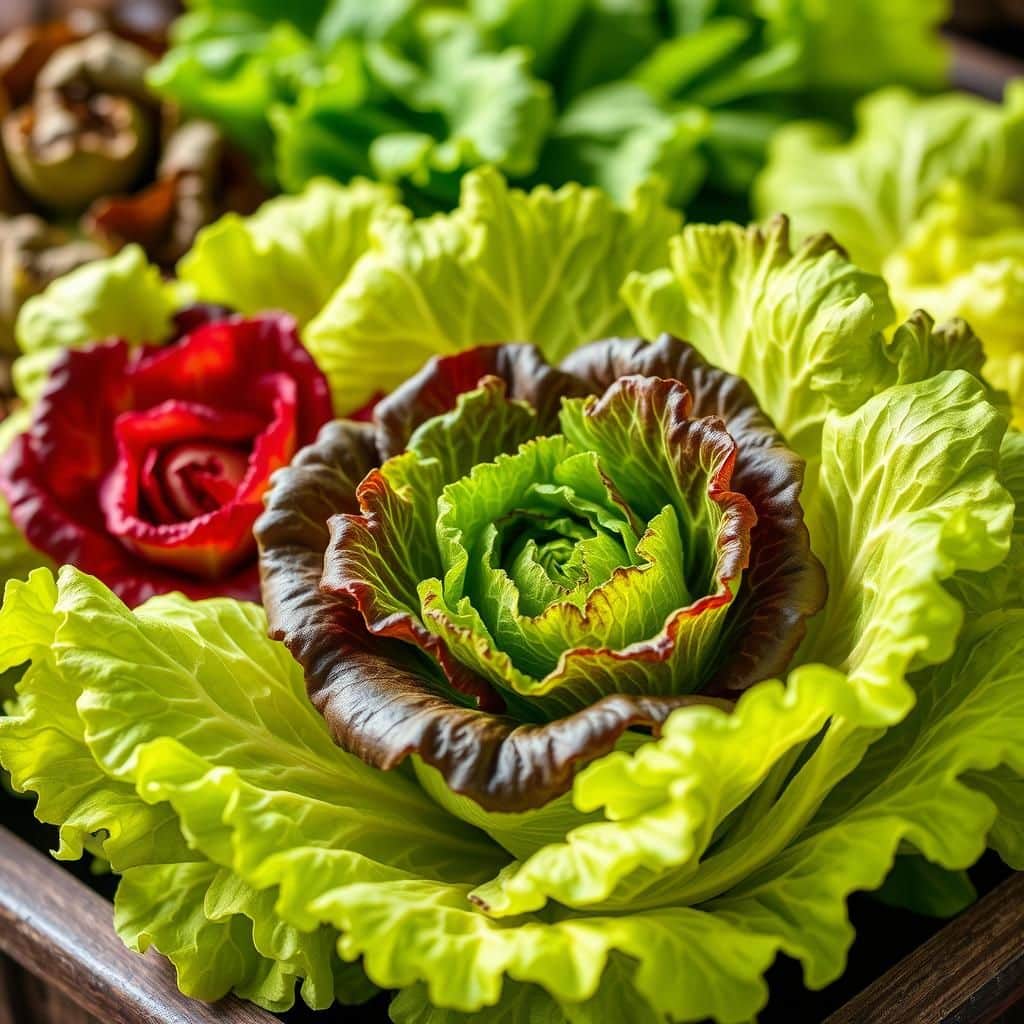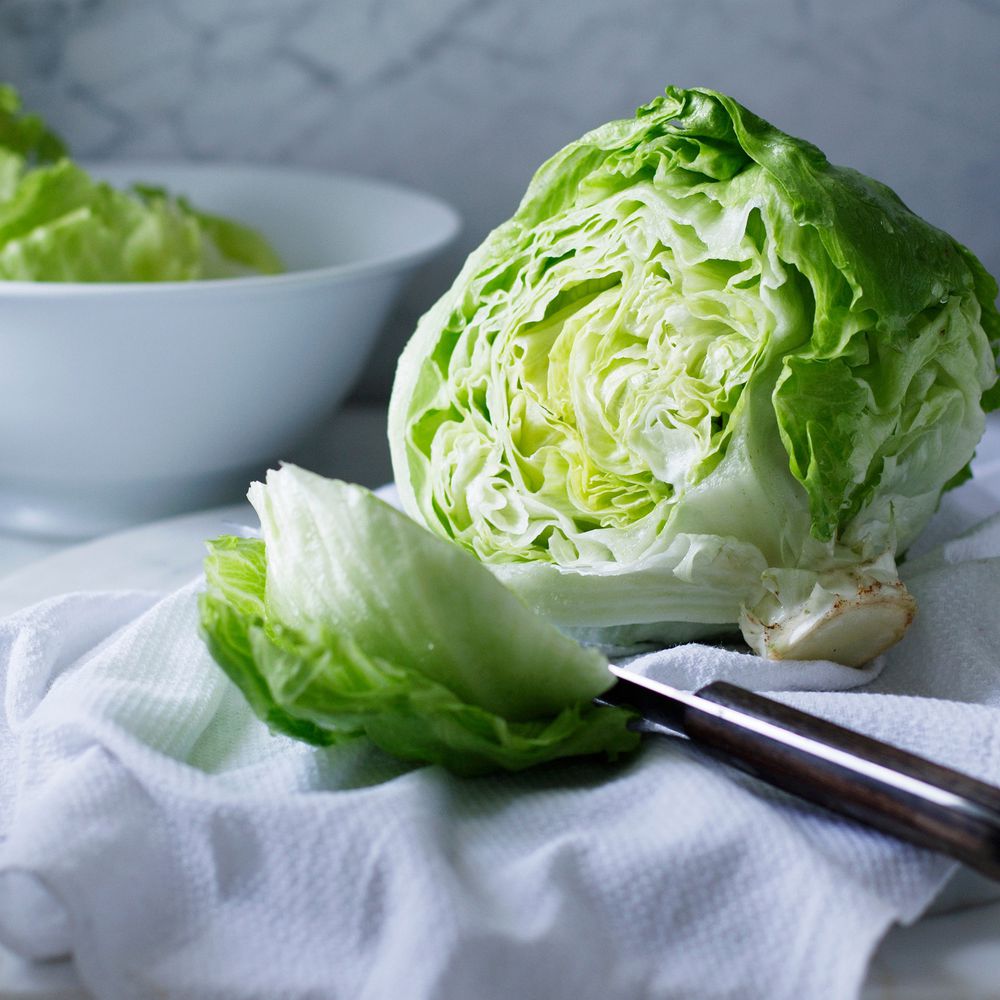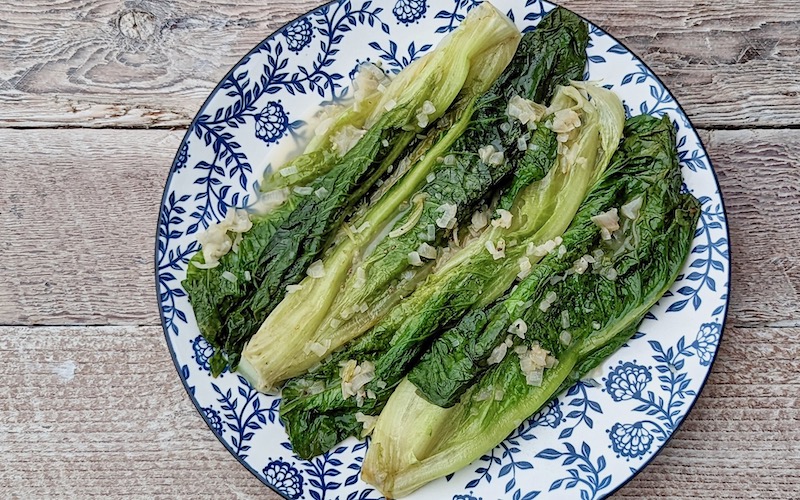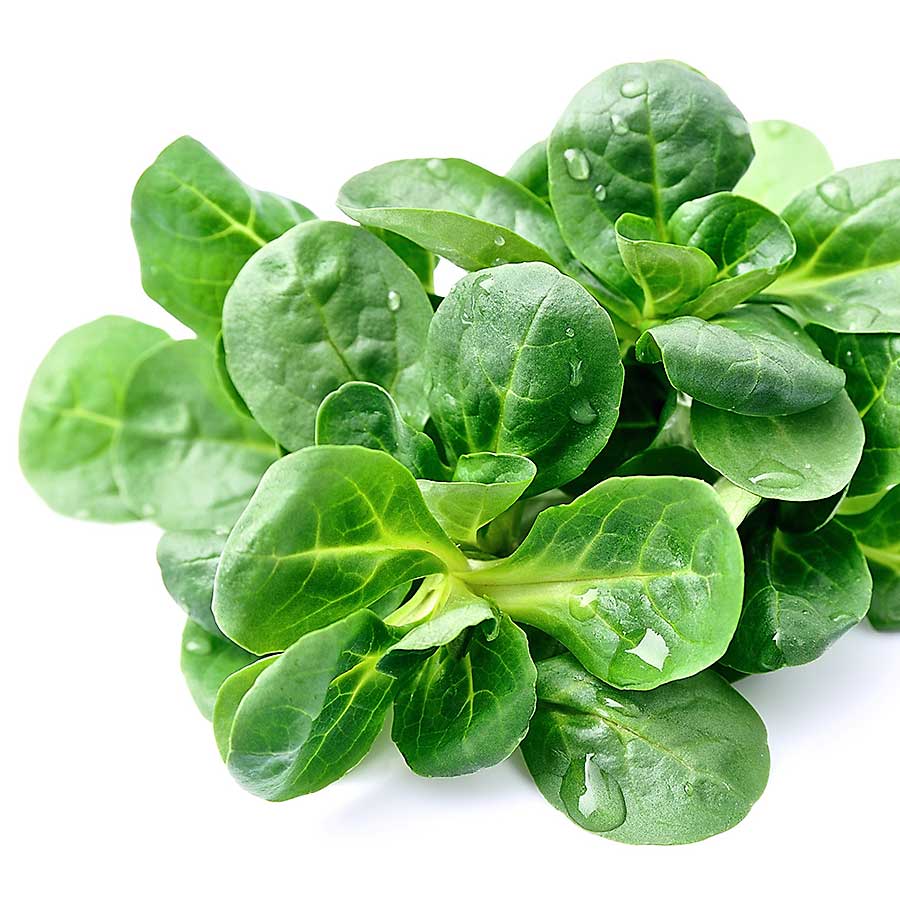Discover the Best Lettuce Varieties in Australia: A Comprehensive Guide

Lettuce is a staple in Australian gardens and kitchens, celebrated for its crisp texture and refreshing flavor. With a variety of types suited to different climates and culinary uses, choosing the right lettuce can elevate your salads and dishes. This comprehensive guide explores the best lettuce varieties available in Australia, highlighting their unique characteristics, growing tips, and optimal uses in cooking. Whether you're a seasoned gardener or a novice home cook, understanding these varieties will help you make informed choices for your garden and meals. Join us as we dive into the world of lettuce and discover the best options for every palate.
Lettuce Varieties in Australia
Australia is home to a diverse range of lettuce varieties, each suited to different climates and growing conditions found across the continent. The most commonly cultivated types include Iceberg, Romaine, Butterhead, and Leaf lettuce, each providing unique textures and flavors that contribute to the vibrant Australian culinary scene. Iceberg lettuce is known for its crisp texture and mild taste, making it a staple in salads and sandwiches. Romaine, with its erect leaves and slightly bitter flavor, is often used in Caesar salads. Butterhead varieties, such as Boston and Bibb, are revered for their tenderness and buttery flavor. Meanwhile, Leaf lettuce offers a variety of colors and textures, allowing for robust salad mixes. The growing interest in hydroponic and organic farming methods has also seen an increase in the cultivation of less common varieties and specialized types, catering to the demand for fresh, locally-sourced produce.
Common Types of Lettuce Grown in Australia
In Australia, the most prevalent types of lettuce include Iceberg, Romaine, Butter, and Leaf lettuce. Iceberg is widely favored due to its crunchy texture, often gracing burgers and salads. Romaine, crucial for classic Caesar salads, features a sturdier leaf, while Butter lettuce’s soft leaves add a gentle touch to various dishes. Leaf lettuces, available in both red and green varieties, provide a colorful addition to salads and are valued for their subtle flavors. Local farmers are increasingly experimenting with heritage and exotic varieties, contributing to diverse dining options.
The Role of Climate in Lettuce Production
The success of lettuce production in Australia is heavily influenced by the climate. Lettuce thrives in cooler conditions, as heat can cause it to bolt and produce bitter flavors. Regions like Tasmania and the southern parts of Victoria have favorable climates for growing lettuces during the cooler months. In contrast, higher temperatures found in Queensland necessitate careful management, including the use of shade cloths to protect the crops from excessive heat. Overall, understanding the local climate is essential for optimal lettuce growth and yield across different regions of Australia.
Hydroponic Lettuce Farming in Australia
Hydroponic farming has gained popularity in Australia for growing lettuce, as it allows for year-round production without reliance on traditional soil methods. This innovative approach minimizes space and maximizes water efficiency, which is particularly advantageous in Australia's often arid climate. Hydroponically grown lettuce tends to be fresher and insects can be controlled more easily, reducing the need for pesticides. Many urban farms are adopting hydroponic systems, bringing fresh greens directly to local consumers and embodying the movement towards sustainable agricultural practices.
Health Benefits of Lettuce
Lettuce is not only a versatile ingredient but also offers numerous health benefits. It is low in calories and high in water content, making it an ideal choice for hydration and weight management. Varieties like Romaine and Leaf lettuce are especially rich in vitamins A, C, and K, which are essential for maintaining healthy skin, bones, and immune function. The presence of antioxidants further enhances its appeal as a nutritious food choice. Additionally, lettuce contains fiber, promoting digestive health, making it a valuable addition to a balanced diet.
Innovative Lettuce Varieties and Trends
The Australian market has seen a rise in innovative lettuce varieties, as chefs and consumers alike seek new flavors and textures. Varieties such as red leaf and frisée have become popular in gourmet dishes, offering striking visual appeal and a unique crunch. Furthermore, with the growing demand for organic produce, many farmers are exploring ways to cultivate these innovative types without synthetic chemicals, ensuring that the end products are not only flavorful but also align with health-conscious trends. The continuous evolution in the varieties of lettuce available reflects Australia’s dynamic food culture.
| Lettuce Variety | Texture | Flavor Profile | Common Uses |
|---|---|---|---|
| Iceberg | Crisp | Mild | Salads, sandwiches |
| Romaine | Sturdy | Bitter | Caesar salads |
| Butterhead | Soft | Buttery | Salads, wraps |
| Leaf Lettuce | Varied | Subtle | Mixed salads |
What is the most popular lettuce in Australia?

The most popular lettuce in Australia is iceberg lettuce. This variety is favored for its crisp texture, refreshing taste, and versatility in various culinary applications. Iceberg lettuce is widely used in salads, sandwiches, and as a garnish due to its ability to maintain its crunch even when combined with dressings and other ingredients. Its availability year-round makes it a staple in Australian households and restaurants alike.
The Characteristics of Iceberg Lettuce
Iceberg lettuce is known for its distinct features that make it a popular choice among consumers.
- Crisp Texture: Iceberg has a satisfying crunch that adds texture to dishes.
- High Water Content: Comprising about 95% water, it is hydrating and refreshing.
- Neutral Flavor: Its mild taste allows it to pair well with various seasonings and ingredients.
Uses of Iceberg Lettuce in Australian Cuisine
Iceberg lettuce is extremely versatile and finds its way into many dishes, enhancing both flavor and presentation.
- Salads: It is commonly used in mixed salads, often accompanied by dressings.
- Sandwiches and Burgers: Its crispness provides a satisfying element in sandwiches and burger toppings.
- Wraps and Rolls: Used as a wrap for fillings, it adds a crunchy and nutritious element.
Health Benefits of Iceberg Lettuce
In addition to its culinary uses, iceberg lettuce offers several health benefits that contribute to its popularity.
- Low in Calories: Iceberg lettuce is an excellent option for low-calorie diets.
- Rich in Vitamins: It provides essential vitamins such as Vitamin K and some Vitamin A.
- Hydrating: Its high water content aids in hydration, especially in warm climates.
Growing Iceberg Lettuce in Australia
Iceberg lettuce is relatively easy to grow, making it a common choice for home gardeners in Australia.
See also:
- Climate: It thrives in cool to moderate temperatures, ideal for many regions in Australia.
- Soil Requirements: Preferring well-drained soil rich in organic matter, it fosters good growth.
- Watering Needs: Regular watering is necessary to ensure crisp leaves, especially in dry spells.
Availability and Purchasing Options
Iceberg lettuce is widely available across Australia, both in supermarkets and local markets.
- Supermarkets: Most major supermarkets stock iceberg lettuce year-round.
- Farmers' Markets: Local growers offer fresh options, often at lower prices.
- Online Grocery Services: Many online platforms provide convenient delivery options for fresh iceberg lettuce.
What do Australians call romaine lettuce?

Romaine lettuce is commonly referred to as cos lettuce in Australia. This term is widely used in grocery stores, recipes, and culinary discussions. The name arises from the Cos variety, which is originally from the Greek island of Cos. This type of lettuce is characterized by its long, upright leaves and crunchy texture, making it a popular choice for salads, sandwiches, and various dishes.
Characteristics of Cos Lettuce
Cos lettuce is known for its distinct features that set it apart from other lettuce varieties.
- Crisp texture: Cos lettuce has thick, crunchy leaves that provide a satisfying bite.
- Flavor: It has a slightly sweet and refreshing flavor, making it ideal for salads and wraps.
- Appearance: The leaves are elongated and have a deep green color on the outer layers, with lighter green inner leaves.
Uses of Cos Lettuce in Australian Cuisine
In Australian cuisine, cos lettuce is a versatile ingredient featured in numerous dishes.
- Salads: It is often used in Caesar salads, providing the perfect crunch alongside other ingredients.
- Sandwiches and wraps: Its sturdy leaves hold up well, making it an excellent choice for sandwiches and wraps.
- Garnishes: Cos leaves can be used as a garnish for various dishes, adding a pop of color and freshness.
Health Benefits of Cos Lettuce
Cos lettuce is not only delicious but also packed with health benefits.
- Low in calories: Cos lettuce is low in calories, making it an excellent choice for those looking to maintain a healthy diet.
- Rich in nutrients: It contains vitamins A and K, as well as essential minerals like calcium and potassium.
- Hydration: With its high water content, cos lettuce helps keep the body hydrated.
Growing Cos Lettuce
Growing cos lettuce can be a rewarding experience for home gardeners.
- Soil requirements: It grows best in well-drained, fertile soil rich in organic matter.
- Sunlight: Cos lettuce thrives in full sun, requiring at least 6 hours of direct sunlight daily.
- Watering: Regular watering is essential, especially in warmer climates, to keep the soil consistently moist.
Varieties of Cos Lettuce
There are several varieties of cos lettuce, each with unique characteristics.
- Green Romaine: The most common variety, with vibrant green leaves and a crunchy texture.
- Red Romaine: Features reddish-purple leaves, adding visual interest and a slightly different flavor.
- Butterhead Romaine: A sweeter variant, known for its softer leaves and buttery texture.
What is lamb's lettuce called in Australia?

Lamb's lettuce is commonly known as corn salad in Australia. The scientific name for lamb's lettuce is Valerianella locusta, and it is praised for its delicate texture and mild flavor. It is often used in salads, providing a subtle crunch and a fresh taste. This leafy green grows in rosettes and is typically harvested in cooler months, making it a popular choice in seasonal dishes across Australian cuisine.
Characteristics of Corn Salad
Corn salad, or lamb's lettuce, features gentle, tender leaves that are dark green in color. The leaves are typically oval to rounded, forming loose rosettes that make them visually appealing. Some key characteristics include:
- Texture: Corn salad has a tender texture that contrasts well with crispy vegetables.
- Flavor: Its flavor is mild and slightly nutty, making it a perfect base or addition to mixed salads.
- Harvesting: This green vegetable is usually harvested at an early stage when the leaves are young and succulent.
Culinary Uses of Corn Salad
In Australian cuisine, corn salad is utilized in a variety of dishes due to its versatility. It can be used in:
- Salads: Often used as a base for mixed salads, pairing well with other greens and proteins.
- Sandwiches and Wraps: Added as a fresh component in sandwiches or wraps for added texture and flavor.
- Garnishing: Can be used as a garnish for culinary dishes, enhancing their visual appeal.
Health Benefits of Corn Salad
Corn salad is not only delicious but also packed with valuable nutrients that benefit overall health. Important health benefits include:
See also:
- Rich in Vitamins: It contains vitamins A, C, and K, which are essential for immune function and skin health.
- Antioxidant Properties: The leaves also provide antioxidants that help combat oxidative stress.
- Low in Calories: Being low in calories makes it an excellent choice for those looking to manage their weight.
Growing Corn Salad in Australia
Cultivating corn salad at home is increasingly popular among gardening enthusiasts in Australia. The growing conditions include:
- Climate: Prefers cooler weather and is often sown in spring and autumn.
- Soil: Thrives in well-drained, fertile soil, with adequate moisture for optimal growth.
- Care: Requires regular watering and minimal fertilization, making it easy to maintain.
Where to Buy Corn Salad in Australia
For those looking to purchase corn salad, several avenues are available in Australia:
- Supermarkets: Commonly found in the fresh produce section of major supermarkets.
- Farmers’ Markets: Often available directly from local growers at farmers’ markets, showcasing freshness.
- Online Grocery Stores: Some online grocery options may also offer delivery of fresh corn salad.
What are the cut and come again lettuce varieties in Australia?
Cut and come again lettuce varieties, popular in Australia, are particularly valued for their ability to yield multiple harvests from a single planting. Here are some notable varieties that gardeners and farmers often grow:
1. Butterhead Lettuce
Butterhead lettuce is known for its soft, tender leaves and mild flavor. This variety is perfect for a cut and come again approach as it regenerates quickly after leaves are harvested.
- Small heads with a rosette shape.
- Excellent for salads due to its crisp texture.
- Grows well in cooler months, making it suitable for various Australian climates.
2. Rocket (Arugula)
Rocket, also known as arugula, is a leafy green with a strong, peppery flavor cherished by many chefs and home cooks. This plant thrives with frequent harvesting.
- Produces leaves that can be cut repeatedly.
- Ideal for mixes and enhances the flavor profile of salads.
- Fast-growing, often harvested within weeks of sowing.
3. Cos Lettuce
Cos lettuce, also called Romaine, is known for its crunchy texture and robust leaves. It responds well to cutting and will continue to produce new growth.
- Long, cylindrical shape makes it great for wraps and salads.
- Contains high levels of vitamins and minerals.
- Can tolerate warmer weather better than other varieties.
4. Loose-leaf Lettuce
Loose-leaf lettuce varieties are particularly versatile and easy to grow, making them excellent candidates for cut and come again practices.
- Allows for quick harvesting of outer leaves while the center continues to grow.
- Includes various cultivars that can range in color and flavor.
- Often faster to mature than heading varieties.
5. Mesclun Mix
Mesclun mixes, featuring a combination of young leafy greens, are a fantastic option for those looking for a variety of flavors and textures.
- Can include assorted lettuces, mustards, and herbs.
- Provides a vibrant array of colors for salads or garnishes.
- Easy to cultivate in small spaces and ideal for continuous harvests.
Questions from Our Readers
What are the most popular lettuce varieties in Australia?
The most popular lettuce varieties in Australia include Iceberg, Romaine, and Butterhead. Iceberg is known for its crisp texture and is often used in salads and burgers, while Romaine is favored in Caesar salads for its tender leaves. Butterhead, with its soft, buttery leaves, is preferred for its flavor and is commonly used in gourmet dishes.
How do the growing conditions affect lettuce varieties in Australia?
Growing conditions significantly influence the growth of lettuce varieties in Australia, particularly because of the climate variability. Lettuce thrives in cooler temperatures and requires plenty of water, making it essential to grow it during the cooler months or in shaded areas during hotter seasons to prevent bolting and maintain quality.
Are there any unique Australian lettuce varieties?
Yes, there are unique Australian lettuce varieties such as Wombok, which is a type of Napa cabbage, often used in Asian cuisine. Its crunchy texture and sweet flavor make it a favorite among locals for stir-fries and salads. Additionally, Cos lettuce, a variety of Romaine, has become increasingly popular due to its versatility and use in various dishes.
How can I store different types of lettuce to maintain freshness?
To maintain freshness, lettuce should be stored in the refrigerator and ideally wrapped in a slightly damp paper towel to retain moisture without causing sogginess. It's best to place lettuce in a sealed container or a perforated plastic bag to promote airflow. Different varieties may have distinct storage needs, so always check for specific guidelines for each type.
See also:

If you want to read more articles like Discover the Best Lettuce Varieties in Australia: A Comprehensive Guide, we recommend you check out our Seeds category.
Leave a Reply

Related Articles